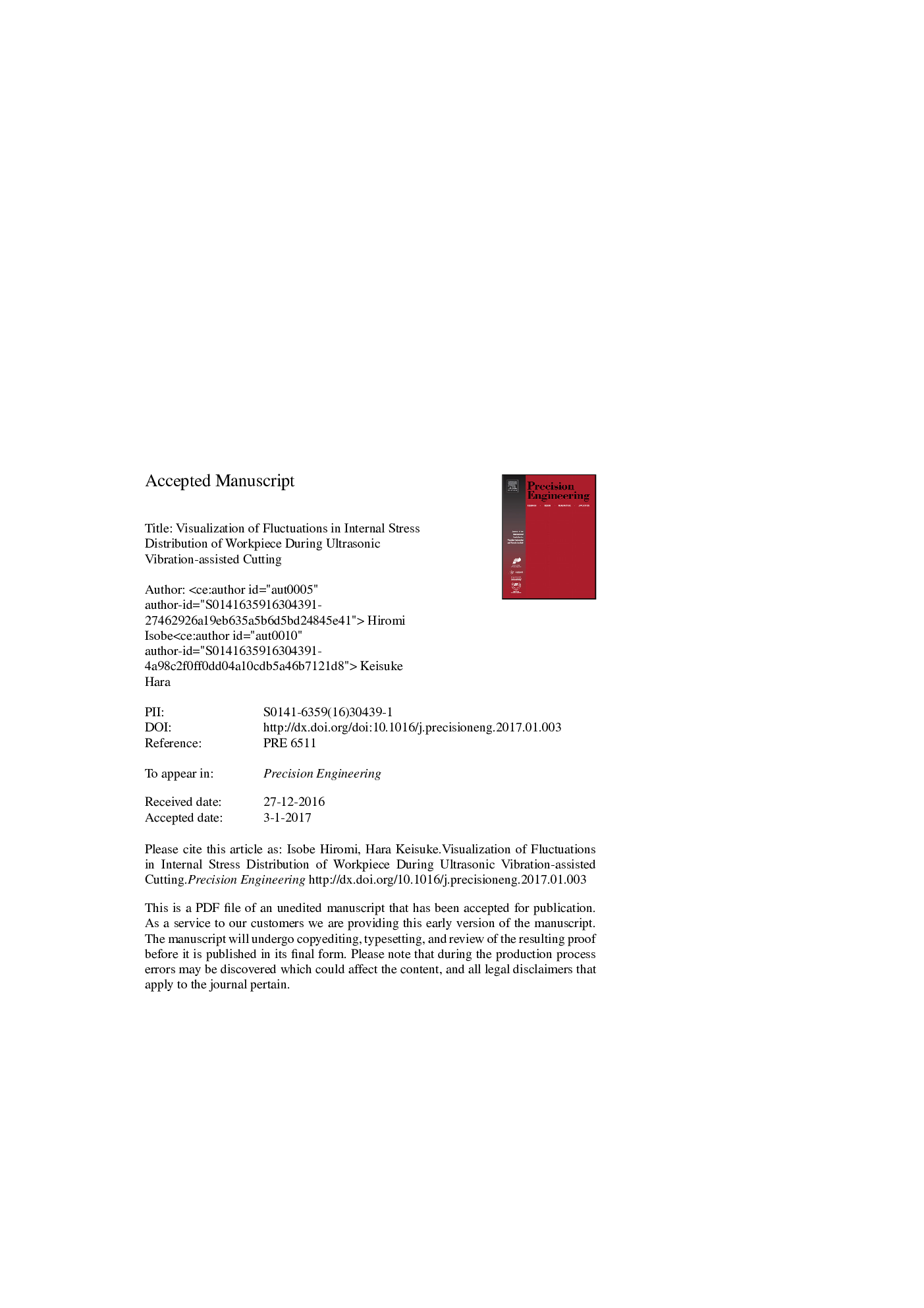| کد مقاله | کد نشریه | سال انتشار | مقاله انگلیسی | نسخه تمام متن |
|---|---|---|---|---|
| 5019162 | 1467840 | 2017 | 21 صفحه PDF | دانلود رایگان |
عنوان انگلیسی مقاله ISI
Visualization of fluctuations in internal stress distribution of workpiece during ultrasonic vibration-assisted cutting
ترجمه فارسی عنوان
تجسم نوسانات توزیع استرس داخلی قطعه کار در طول برش با کمک ارتعاش اولتراسونیک
دانلود مقاله + سفارش ترجمه
دانلود مقاله ISI انگلیسی
رایگان برای ایرانیان
کلمات کلیدی
برش لرزش التراسونیک، روش عکسبرداری، توزیع استرس، برش متعارف، اثر استروکوسکوپیک،
موضوعات مرتبط
مهندسی و علوم پایه
سایر رشته های مهندسی
مهندسی صنعتی و تولید
چکیده انگلیسی
The aim of this study is to construct visualization system of stress distribution under ultrasonic vibration-assisted cutting condition in order to investigate the cutting phenomenon. The vibrating cutting edge is considered to be cause of dynamic change of cutting force at ultrasonic frequency. However, many researchers have explained the effect of ultrasonic vibration-assisted cutting by evaluating the time-averaged cutting force, because it is difficult to measure the dynamic cutting force by using dynamometers. In this study, the instantaneous stress distribution on workpiece was visualized by photoelastic method in combination of pulse laser emission synchronized with vibration of cutting edge. Orthogonal cutting test was carried out at low cutting speed relative to vibration speed of insert. A constructed photographic system divided the ultrasonic vibration period of 36.2 μs into 360 points and took one photograph frame at each point. By counting the number of criteria pixels which images the cutting stress, the intermittent cutting condition was evaluated. It was experimentally confirmed that the stress distribution under vibration-assisted condition showed the periodical change synchronized with insert vibration. Because these results are compatible with well-known vibration cutting theories, the imaging system is able to show the periodic change of stress distribution in ultrasonic frequency band. The intermittent cutting condition was affected not only feed speed but also depth of cut. The theory of relative motion between tool and workpiece is insufficient to explain these results. Therefore, remnants formed due to elastic deformation of the workpiece were examined. The vibration cutting dramatically reduced the elastic deformation and the vibration amplitude had effect on the amount of remnant thickness.
ناشر
Database: Elsevier - ScienceDirect (ساینس دایرکت)
Journal: Precision Engineering - Volume 48, April 2017, Pages 331-337
Journal: Precision Engineering - Volume 48, April 2017, Pages 331-337
نویسندگان
Hiromi Isobe, Keisuke Hara,
